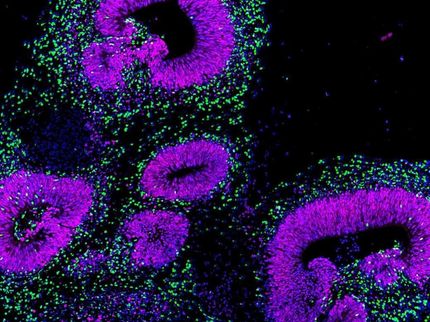New genetic model for Parkinson's disease
Researchers at the Karolinska Institute are homing in on mechanisms that may explain one set of causes for Parkinson's disease. In mice they have mimicked disturbances of mitochondria thought to be one cause of disease. By genetic means the disturbance of mitochondria were directed to those nerve cells that produce the transmitter substance dopamine and that die in Parkinson's disease.
In the mouse model generated by the research team, a gene called TFAM is automatically deleted from the genome in dopamine nerve cells only. Without TFAM, mitochondria cannot function normally. The so called respiratory chain is compromised and energy production decreases severely in the dopamine cells.
The new mice are born healthy from healthy but genetically modified parents and will develop spontaneous disease. Previous studies in the field have been based on researchers delivering neurotoxic substances to kill the dopamine neurons. In the new mice, however, mice develop disease slowly in adulthood, like humans with Parkinson's disease, which may facilitate research aimed at finding novel medical treatments and other therapies.
"We see that the dopamine producing nerve cells in the brain stem slowly degenerate", says Dr. Nils-Göran Larsson. "In the microscope we can see that the mitochondria are swollen and that aggregates of a protein, probably alpha-synuclein starts to accumulate in the nerve cell bodies. Inclusions of alpha-synuclein-rich so called Lewy bodies is typical for the human disease."
The causes of Parkinson's disease have long remained a mystery. Genes and environment are both implicated, but recently there has been an increased focus on the roles of genetic factors. It has been found that mutations in a number of genes can lead directly to disease, while other mutations may be susceptibility factors, so that carriers have an increased risk of becoming ill. A common denominator for some of the implicated genes is their suggested role for the normal functioning of mitochondria.
"Like patients, the mice can be treated with levo-Dopa, a precursor of the lost substance dopamine", says Dr. Nils-Göran Larsson. "The course of the disease as well as the brain changes in this mouse are more similar to Parkinson's disease than most other models. This supports the notion that genetic risk factors are important."
"Like in patients, the dopamine nerve cells in the new mouse model die in a specific order", says Dr. Lars Olson. "We hope the mouse will help us understand why certain dopamine nerve cells are more sensitive than others, so that we can develop drugs that delay, ore even stop the nerve cell death."
Original publication: M. I. Ekstrand, M. Terzioglu, D. Galter, S. Zhu, C. Hofstetter, E. Lindqvist, S. Thams, A. Bergstrand, F. Sterky Hansson, A. Trifunovic, B. Hoffer, S. Cullheim, A. H. Mohammed, L. Olson, N.-G. Larsson; "A pathophysiological link between respiratory chain dysfunction and parkinsonism with synuclein inclusions"; PNAS 2006.
Most read news
Organizations
Other news from the department science

Get the life science industry in your inbox
By submitting this form you agree that LUMITOS AG will send you the newsletter(s) selected above by email. Your data will not be passed on to third parties. Your data will be stored and processed in accordance with our data protection regulations. LUMITOS may contact you by email for the purpose of advertising or market and opinion surveys. You can revoke your consent at any time without giving reasons to LUMITOS AG, Ernst-Augustin-Str. 2, 12489 Berlin, Germany or by e-mail at revoke@lumitos.com with effect for the future. In addition, each email contains a link to unsubscribe from the corresponding newsletter.






















































